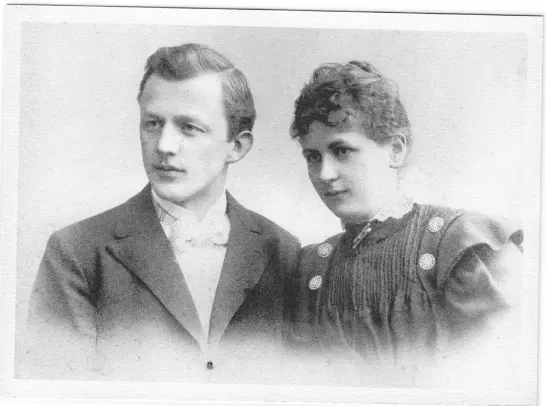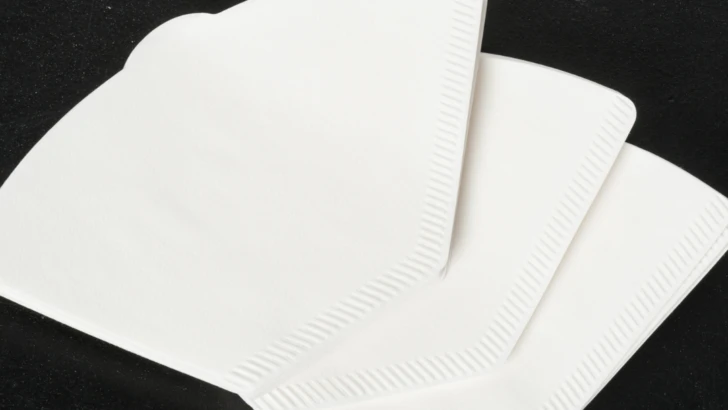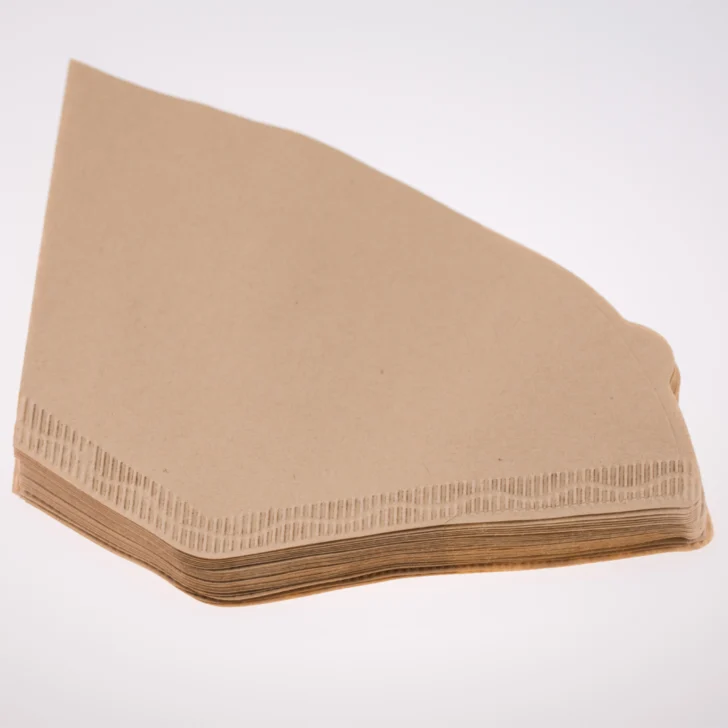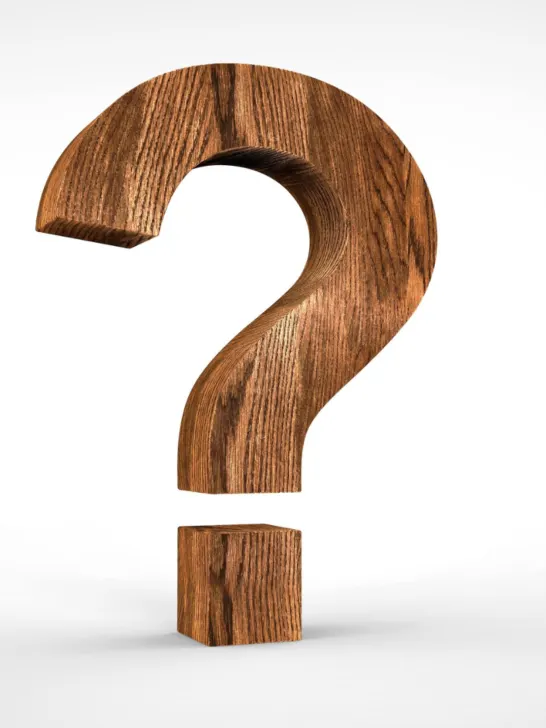Table of Contents
Do you know the difference between unbleached vs bleached coffee filters? If not, you’re not alone. A lot of people don’t know the difference, but it’s an important distinction to make when you’re choosing a coffee filter.
In this blog post, we’ll discuss the differences between unbleached vs bleached coffee filters so that you can make an informed decision about which one is right for you.
Uncovering the History of Paper Coffee Filters: From Inception to Present Day
Paper coffee filters have a long and interesting history. While some sources claim that the first paper filter for coffee was invented in Germany in 1908, others argue that it was created by Melitta Bentz, a German housewife in 1908.
Melitta Bentz took a piece of blotting paper from her son’s school notebook, cut it into a circular shape to fit into the top of a brass pot she had pierced several holes into. She then filled the pot with ground coffee and hot water and let them steep, thus creating the world’s first paper filter for coffee!

This invention revolutionized the way people made their coffee, as they could now make it quickly and conveniently without having to boil ground beans or wait for them to settle at the bottom of their cup.
The modern-day paper filter has gone through many changes over the years – both technologically and aesthetically. For example, in 1959, James Nason and Harold Wintrup designed “The Gold Cup” – a filter designed for cone-shaped brewers instead of flat-bottomed ones.
This allowed for faster and more efficient extraction from grounds placed within its basket-like interior. Another development was seen in 1971 when German manufacturer Graef introduced an entirely new concept: A re-usable stainless steel filter that could be used multiple times without needing to be replaced like traditional paper filters were doing at that time..
Currently, there are many different types of paper filters available on the market – from disposable ones made from bleached or unbleached wood pulp to special reusable filters made from cotton or hemp fiber fabric.
Regardless of what type you choose, one thing remains true: Paper filters have changed not only how we make our morning cup o’ joe but also how we enjoy it!
What Are Bleached Coffee Filters and How Are They Made?

Bleached coffee filters are a type of filter paper used in many household coffee makers. They are designed to remove impurities, such as oils and sediment, from brewed coffee, thus improving its flavor.
Bleached filters are made from cellulose fibers that come from trees or cotton lint. These fibers are then treated with a chemical to whiten and soften the material so that it’s easier to shape into paper.
Generally, the bleaching process involves soaking the fibers in hydrogen peroxide or chlorine dioxide. This breaks down the lignin molecules found within the cellulose fibers that can give coffee an unpleasant taste if left untreated.
The bleached paper is then dried and cut into circular shapes for use in standard-size coffee makers. Bleached coffee filters provide an additional benefit of being more resistant to tearing than unbleached varieties which makes them better able to hold finer grounds and prevent them from escaping into your cup or carafe.
Additionally, they’re less expensive than other types of filters since they don’t require additional processing after bleaching.
Why Are Coffee Filters Bleached In The First Place?
Paper coffee filters are often bleached in order to remove any natural oils, impurities, and residues that may be present. This ensures that the filter paper does not impart any off flavors or odors into the brewed coffee.
The most common method used to bleach filter paper is chlorine dioxide bleaching, which is considered a safe and effective way to treat paper products.
Chlorine dioxide penetrates through the entire thickness of the paper quickly and deeply, removing contaminants without leaving behind any chemical residue or odor.
Additionally, chlorine dioxide bleaching can help preserve certain properties like porosity which helps allow water penetrate through and ensure even extraction of the coffee grounds during brewing.
What Are Unbleached Coffee Filters and How Are They Made?
Unbleached coffee filters are a type of filter paper that is used for brewing coffee. They are made from natural, unbleached pulp, which is composed of cellulose and lignin fibers derived from wood pulp.
Unlike standard paper filters, unbleached coffee filters do not contain any bleaching agents or synthetic dyes, so they are considered to be more environmentally friendly and better for your health. The process of making these types of filters involves several steps.

The first step is the preparation of the raw material – wood pulp. Wood pulp needs to be soaked in water for up to 24 hours in order to soften it before it can be processed further.
Once the pulp has softened enough, it is then mechanically beaten and cooked in large vats with various chemicals like sulfur dioxide or sodium hydroxide to separate out the lignin fibers from the cellulose ones.
After this process, some additional bleaching and buffering may take place in order to make sure that the final product meets all quality standards.
Once all these processes have been completed, the resulting mixture is then dried and pressed into sheets of filter paper which can be cut into various shapes depending on their intended use (e.g., round filters for percolators or flat-bottomed filters for drip coffee makers).
These filter papers are very absorbent and allow hot water to pass through them while trapping most solids from coffee grounds, including oils and bitter compounds that can affect taste negatively.
In addition, because they don’t contain any chemicals or dyes, unbleached coffee filters are also much less likely to impart any unpleasant tastes into brewed coffee than regular paper filters do.
Don’t Forget to Rinse The Filter
“What!?!? Why would I do that?” That’s a great question and I’m glad you asked.
If you want to brew the perfect cup of coffee, then let’s be clear: papery notes and chlorine aftertastes from bleaching are a definite no-no.
If you don’t rinse your filter, coffee brewed with it can have a paper-like taste – especially when using light roasts.
To maximize the flavor of your favorite beans and optimize brewing temperature, make sure to follow professional baristas’ advice: pre-rinse the filter with hot brew water before use. This will eliminate any unwanted flavors from seeping into your drink and ensure that all equipment is properly warmed up for deliciousness!
To avoid any unflattering taste in your beverages, investing in higher-quality filters like Chemex and Krups is a good idea. Even better are specialty filters made from bamboo fibers, which use an oxygenating process instead of bleach to whiten them – thus making sure the flavor remains pure!
Are Bleached Coffee Filters Safe?

When considering the safety of bleached paper coffee filters, it is important to understand the process in which these filters are made.
As stated above, bleached paper coffee filters are created from a mixture of cellulose fibers derived from trees as well as elemental chlorine gas, also known as chlorine dioxide. When used properly and under the correct conditions, chlorine dioxide can be an effective sanitizing agent that does not result in any toxic residue.
However, if used improperly or for too long, it may leave behind small traces of dioxins – a family of chemicals that are highly toxic and hazardous to human health.
Fortunately, modern methods of producing bleached paper coffee filters use materials that are vastly safer than those used in the past, such as non-chlorinated pulp and hydrogen peroxide. This ensures that any dioxin residue left behind is minimal or nonexistent.
In addition to being safer than older methods of production, modern bleached paper coffee filters possess other advantages over their unbleached counterparts.
For starters, they make it much less likely for off-flavors to transfer into your cup due to their superior filtration performance when compared with unbleached varieties – an especially important quality for more delicate coffees like light roasts or single origin coffees.
They also boast improved wet strength over unbleached versions due to the increased bonding between fibers caused by their bleaching process, resulting in a filter that’s not only stronger but easier to fold as well!
Ultimately, when handled properly and used according to directions (such as rinsing them with hot water before brewing), contemporary bleached paper coffee filters should be perfectly safe for both you and your coffee!
What’s The Verdict?
Bleached paper coffee filters are not inherently dangerous when used properly. At the end of the day, whether you choose to use unbleached vs bleached coffee filters is up to you and your own preferences.
However, if safety and superior filtration performance are important concerns for you, then opting for higher-quality filters that use oxygenating processes instead of bleach is also a good idea. Just make sure to always pre-rinse them before use to ensure that no potentially harmful chemicals and no unwanted flavors make their way into your cup.
Ultimately, it’s up to you and your own preferences – but with the right tools, you can rest assured that your coffee will always taste its best!
Happy brewing! Happy sipping!
P.S. Be sure to check out our other coffee-related articles for more information, as well as more tips and tricks on making the perfect cup of joe and to learn “All About That Coffee!”

